Ruby stone – meaning, benefits and facts
The ruby stone, with its vibrant beauty and significant history, is one of the most precious and delightful gemstones on the planet. In this article, we will look at the meaning of ruby, its benefits, and present some interesting facts about this stone that attracts the attention of many jewelry lovers.
The meaning of the ruby stone
Ruby is considered a stone of passion and love. It symbolizes strength, energy and vitality. In ancient cultures, the ruby was associated with wealth, power, and royalty. Ruby was considered as an amulet with protective properties and the ability to attract good luck and prosperity. Today, the ruby represents passionate love, willpower, and confidence.
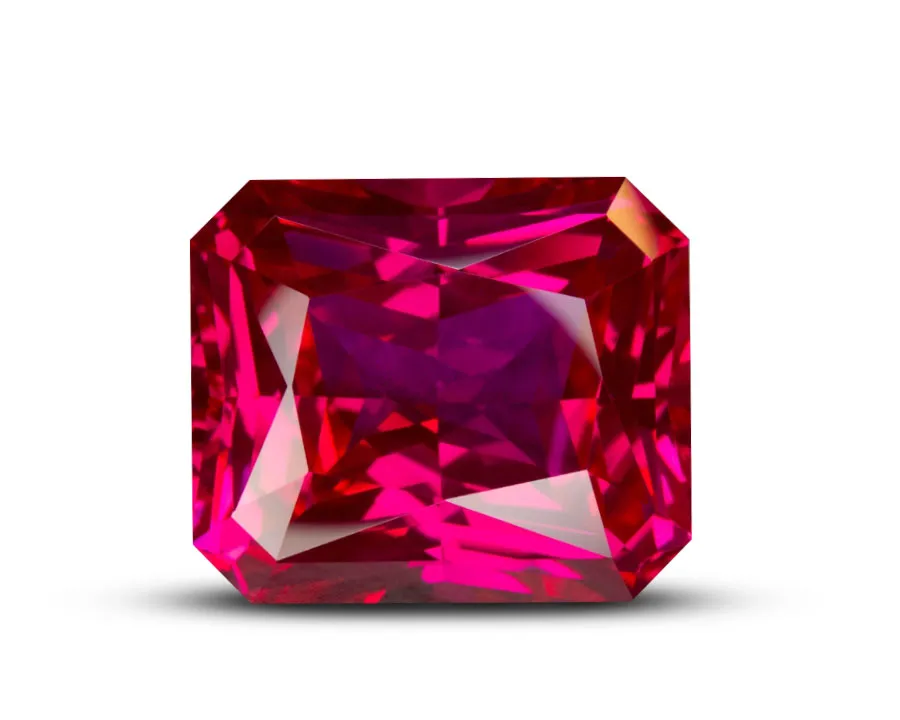
Benefits of ruby stone
Emotional Benefits: Ruby is able to evoke feelings of passion, love, and romance. It can strengthen emotional bonds and give depth and stability to relationships.
Physical Benefits: In addition to its symbolic meaning, the ruby is also associated with physical health and vitality. Healing properties are attributed to him, including the ability to increase overall vitality, strengthen the heart and improve blood circulation.
Energy Benefits: Ruby is considered the stone of the sun and is associated with solar energy. It can help relieve fatigue and tension, increase enthusiasm and restore energy balance.
How is the color of a ruby judged?
A ruby's color rating is based on its saturation, hue, and uniformity. Saturation reflects the degree of red color, with saturated red being considered the most desirable. The hue of a ruby can vary from red to pinkish or purple. Clarity of color is important, the ideal ruby should be free of impurities or staining. Uniformity means even distribution of color throughout the stone without zones or spots. Professional appraisers use international grading systems such as the GIA (Gemological Institute of America) system to classify and grade ruby color.
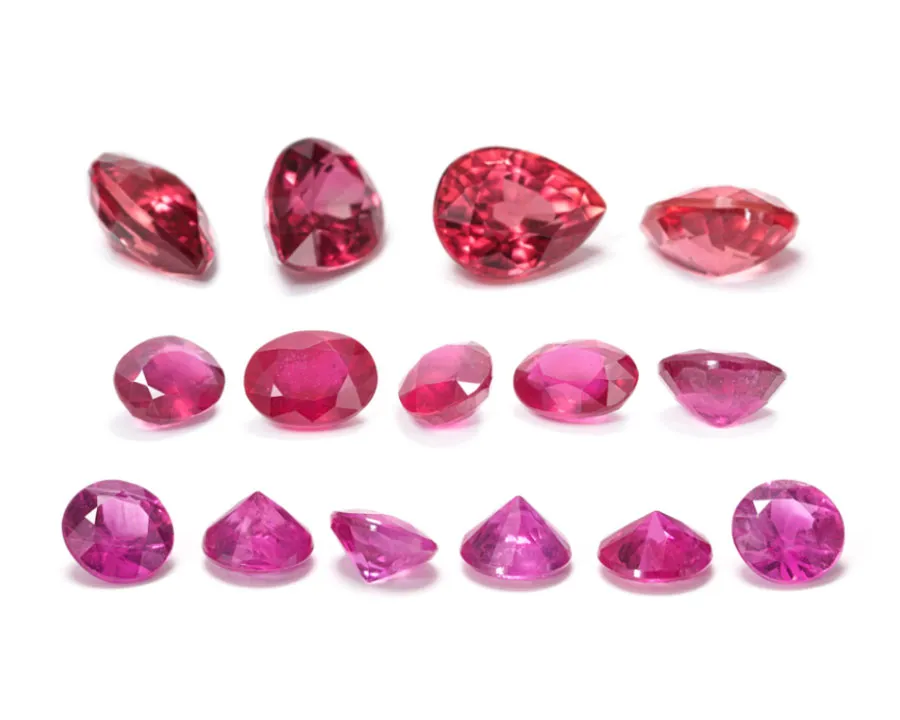
Facts and history of ruby gemstones
Where rubies are mined:
Rubies are formed in the depths of the Earth under the influence of high pressure and temperature. They are often associated with corundum, which is the same mineral but has a different color. Ruby gets its red color from chromium impurities in the crystal structure.
Major ruby mining sites include Myanmar (Burma), Sri Lanka, Thailand, Cambodia and Mozambique. Myanmar is famous for its high quality rubies, especially from the Mogok region, which is considered one of the richest ruby deposits in the world.
Ruby - precious or semi-precious?
The ruby is considered a gemstone due to its rarity, beauty, and historical value. It is one of the four precious stones along with diamond, emerald and sapphire. Rubies are precious not only because of their beautiful red color, but also because of their symbolic meaning associated with love, passion and energy. Due to their rarity and high demand, rubies are highly valued in the jewelry market.
How to distinguish a real ruby from a fake?
Natural rubies usually command a significantly higher price, especially if they are of good quality. A suspiciously low price may indicate a fake. They also have a rich red color, often with hints of pink or purple. They should not have bright orange or brown hues. Natural rubies usually have internal inclusions or characteristic internal characteristics. These are the natural features of a ruby that a fake may not have or may have unnatural or too perfect inclusions. Ruby is one of the hardest minerals, with a hardness of 9 on the Mohs scale.
Professional evaluation and certification from an independent gemological institute such as the GIA (Gemological Institute of America) can confirm the authenticity of a ruby.
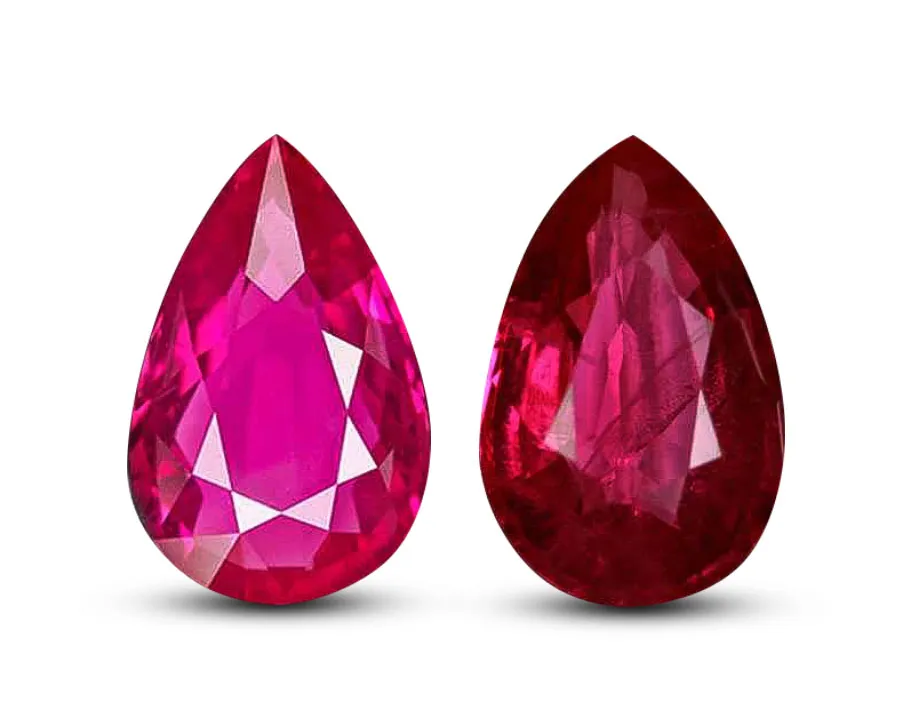
Natural Rubies vs Lab Grown Rubies
Natural rubies form naturally inside the earth over long periods of time, while lab-grown rubies are created artificially under controlled laboratory conditions.
Natural rubies have a natural energy and unique characteristics that can be admired by gemstone collectors and connoisseurs. They also have historical value and can be highly valued due to their rarity and quality.
Lab-grown rubies, although artificially created, have physical and chemical properties almost identical to natural rubies. They can be more affordable and available in larger quantities, making them attractive to those looking for rubies with certain characteristics.
Ultimately, the choice between a natural ruby and a lab-grown ruby comes down to personal preference, budget, and the goals of the purchaser. Both options can provide beautiful and valuable rubies, and it is important to consider individual needs and preferences when choosing between the two.
The most expensive ruby in the world
The most expensive ruby in the world is the Mozambique Red ruby, or the Graff Ruby. This rare 23.60 carat ruby was found in Mozambique and sold at auction in 2014 for an impressive $30 million. Its high price is due to its quality, including intense red color, transparency and no visible defects. This rare and beautiful ruby is one of the most significant and valuable stones in the history of jewelry.
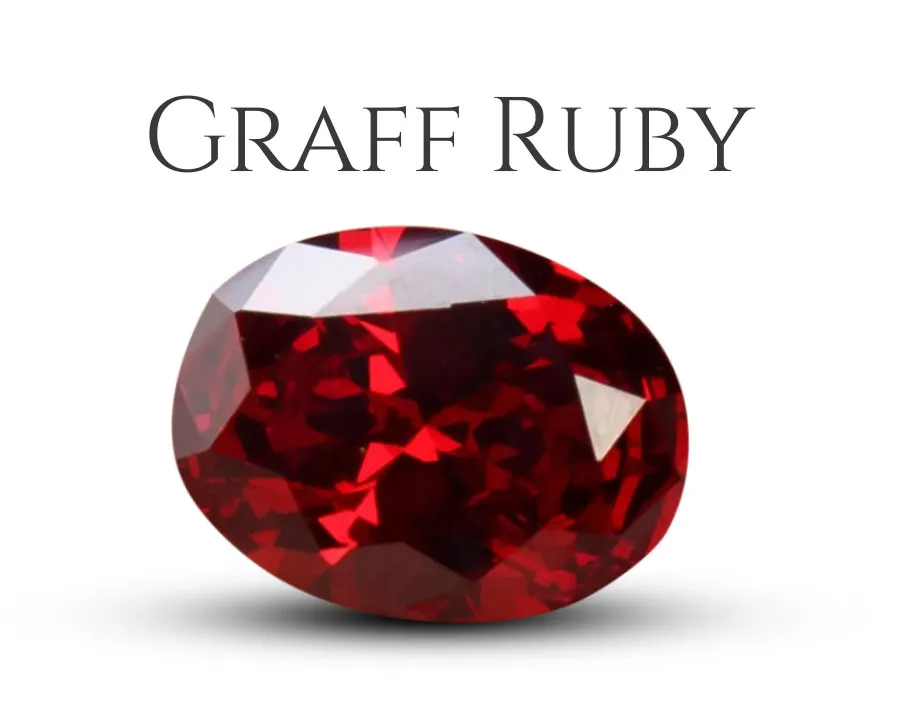
More examples of expensive Rubies
In addition to "Mozambique Red", there are several other famous and expensive rubies that arouse admiration and interest among collectors and connoisseurs of precious stones. Here are some of them:
- "Sangri-la ruby" weighing 25.59 carats is one of the largest and most beautiful rubies in the world. Its bright red color with a high degree of transparency and the absence of inclusions makes it very valuable. In 2015, it sold at auction for $30 million, setting a new price record for rubies.
- "Burmese rubies" are famous for their intense "blood red" color, which is considered the most desirable in the world. They have a high degree of clarity and are among the most valuable rubies on the market.
- "Pigalle Ruby" This term is used to describe the brightest and most intense red rubies with a high degree of clarity. Rubies with this color are considered especially valuable and rare.
- "Mogok Ruby Mountain" in Myanmar is known for its rich ruby deposits. Rubies from Mogok are renowned for their intensity of color, hue of "blood red" and high quality.
Ruby Price Factors
The intense red color of the ruby with a high degree of transparency is considered the most valuable. Rubies with a "blood red" tint are especially valued. Rubies with a minimum number of inclusions and a high degree of transparency are more valuable.
Large rubies are rare and valuable. Weight is measured in carats, and its size can significantly affect its value. The quality of the cut also affects its value. Perfectly symmetrical and high-quality cutting allows the ruby to reveal its beauty to the maximum. Rubies from certain regions, such as Burma (Myanmar), Mozambique or Kashmir, can hold special significance and high value due to their unique characteristics and limited supply.
All these factors interact and determine the final value of the ruby. The higher the quality and rarity of the stone, the higher its price in the gem market.
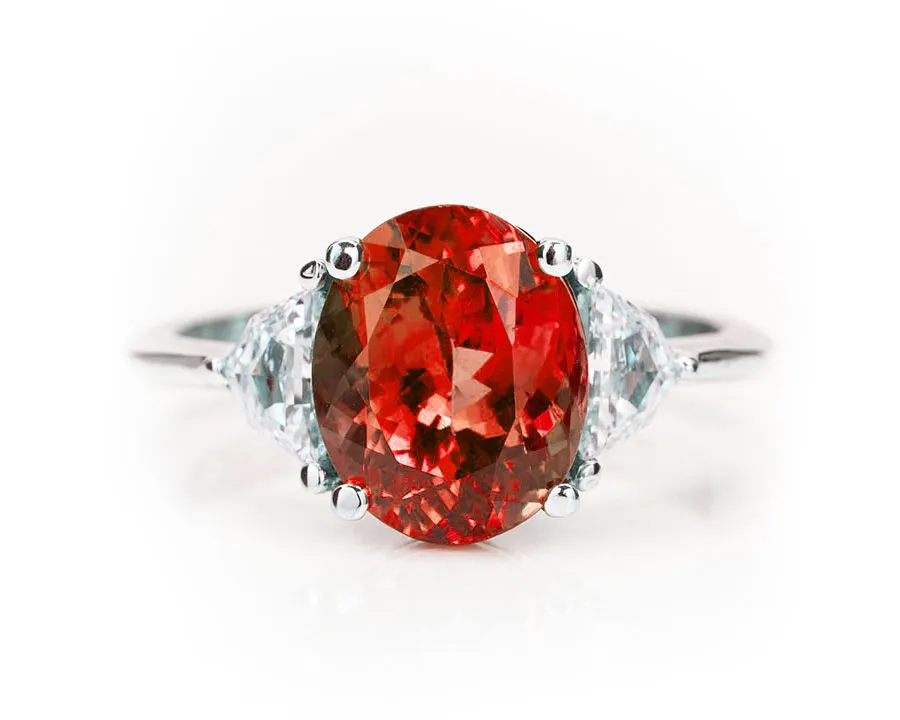
If you want to buy ruby jewelry, Kantor Jewelry will be happy to help you find the best gemstone and create a unique jewelry piece of your own design. We don't buy stones wholesale, we look for the best, most beautiful and profitable personal option for our clients. We seek out special stones for your request until you are satisfied.
Kantor Jewelry will help you to find the best setting option for your stone so it can please you with its beauty for many years as a part of a unique jewelry piece that will be passed from generation to generation.
























































